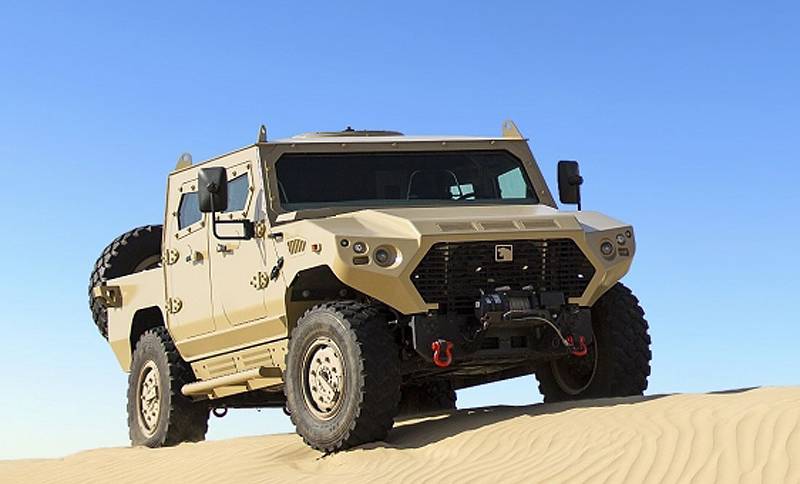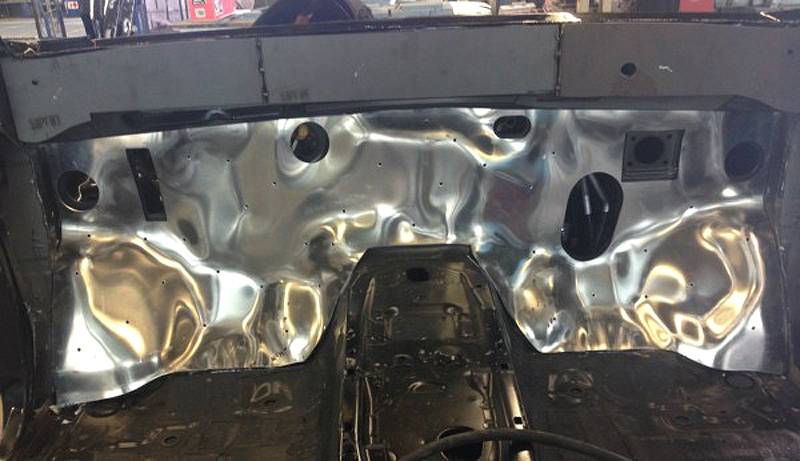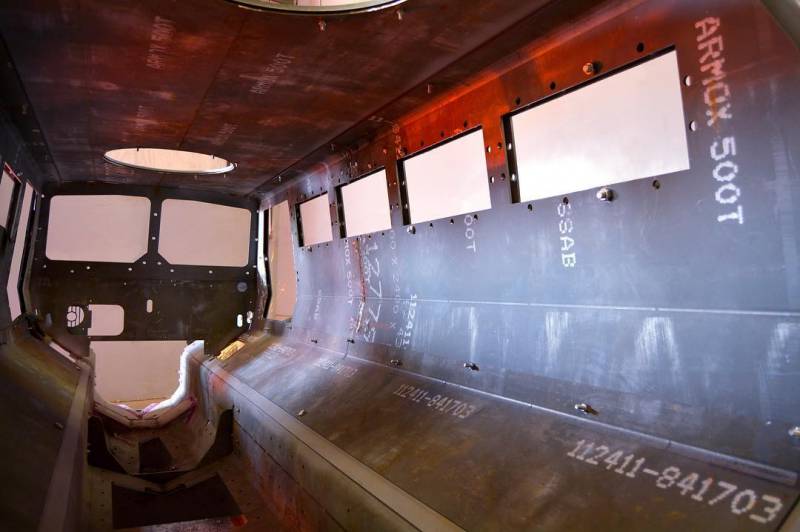Developments in the field of materials to protect the soldier and vehicles

The trade-off relationship between protection and mass-volume-cost is always constant for all types of armor, whether it is body armor or vehicle armor, and there is no single solution or material that could be called a panacea, which is why such a large variety of materials is currently used. and their combinations
Armor is older than mankind for millions of years and it developed primarily to protect against jaws and claws. Quite possibly crocodiles and turtles could partly inspire a person to create security features. Everything weapon kinetic energy, whether it is a prehistoric club or an armor-piercing projectile, is designed to concentrate a large force on a small area, its task is to pierce the target and cause maximum damage to it. Consequently, the job of armor is to prevent this by deflecting or destroying the attacking device and / or dissipating the impact energy over as large an area as possible in order to minimize any damage to manpower, transport systems and facilities that it protects.
Modern armor, as a rule, consists of a solid outer layer for stopping, deflecting or destroying the projectile, an intermediate layer characterized by a very large “work of destruction”, and a viscous inner layer to prevent cracks and the formation of fragments.
Steel
Steel, which became the first material widely used to create armored vehicles, still remains in demand, despite the appearance of armor based on light alloys of aluminum and titanium, ceramics, composites with a polymer matrix, reinforced with glass fibers, aramid and ultrahigh molecular weight polyethylene, as well as composite materials with a metal matrix.
Many steel mills, including SSAB, continue to develop high-strength steels for various applications where weight is critical, for example, for making additional protective sheets. ARM OX 600T armored steel, available in 4-20 mm thick, is available with guaranteed hardness from 570 to 640 HBW units (the abbreviation stands for Hardness, Brinell, Wolfram; a test in which a standard diameter tungsten ball is pressed into a material sample with a known strength, the diameter of the formed recess is measured, then these parameters are substituted into the formula that allows to get the number of units of hardness).
SSAB also emphasizes the importance of achieving the right balance between hardness and toughness to provide protection against penetration and detonation. Like all steels, ARMOX 600T consists of iron, carbon and a number of other alloying components, including silicon, manganese, phosphorus, sulfur, chromium, nickel, molybdenum and boron.
There are restrictions on the production technologies used, especially when it comes to temperature. This steel is not intended for additional heat treatment; when heated above 170 ° C after delivery, SSAB does not guarantee the preservation of its properties. Companies that can get around this type of restriction are more likely to attract close attention from armor manufacturers.
Another Swedish company, Deform, offers hot-stamped parts of bulletproof armor steel to armored vehicle manufacturers, in particular those who are engaged in increasing the level of protection for vehicles of commercial / civilian origin.
Deform solid firewalls are installed in the Nissan PATROL 4x4, the Volkswagen T6 TRANSPORTER minibus, and in the Isuzu D-MAX pickup along with a solid floor sheet of the same material. In the hot molding process developed by Deform and used in the production of sheets, the hardness 600НВ [HBW] is retained.
The company states that it can restore the properties of all armor steels on the market and at the same time maintain a structurally predetermined shape, while the resulting parts are much superior to traditional welded and partially overlapping structures. In the method developed by Deform, hardening and tempering of sheets follow hot stamping. Thanks to this process, it is possible to obtain three-dimensional forms that can not be obtained by cold forming without the obligatory in such cases "welds that violate the integrity at critical points."
Hot-formed Deform steel sheets are used on the BVS-10 and CV90 machines of BAE Systems and, since the early 90s, on many Kraus-Maffei Wegmann (KMW) machines. Orders for the manufacture of three-dimensional armor plates for tank LEOPARD 2 and several shaped sheets for BOXER and PUMA machines plus for several Rheinmetall machines, including again BOXER, as well as a hatch for the WIESEL machine. Deform also works with other protective materials, including aluminum, Kevlar / Aramid and titanium.

Deform delivered solid fireproof partitions for Toyota LC2016 cars to an Australian customer Craig International Ballistics in 200.
Aluminum progress
As for armored vehicles, for the first time, aluminum armor was widely used in the manufacture of the M113 armored personnel carrier, produced from 1960 of the year. It was an alloy, designated 5083, containing 4,5% magnesium and in much smaller quantities manganese, iron, copper, carbon, zinc, chromium, titanium and others. Although 5083 alloy retains its strength well after welding, it does not apply to heat treatable alloys. It doesn’t have such good resistance to 7,62-mm armor-piercing bullets, but, as confirmed by official tests, it stops steel of Soviet-style 14,5-mm armor-piercing bullets, while saving weight and adding the desired strength. For this level of protection, aluminum sheet is thicker and 9 times stronger than steel with a lower density 265 r / cm3, resulting in a reduction in the mass of the structure.
Manufacturers of armored vehicles soon began to request lighter, ballistic more durable, weldable and heat-treated aluminum armor, which led Alcan to develop, primarily 7039 alloy and then 7017, both with a high zinc content.
As in the case of steel, stamping and subsequent assembly can adversely affect the protective properties of aluminum. When welding, the heat-affected zones are softened, but their strength is partially restored due to hardening during natural aging. The metal structure changes in narrow zones near the weld, creating large residual stresses due to an error in welding and / or assembly. Consequently, the production technology should minimize them, while the risk of stress corrosion cracking should also be minimized, especially when the estimated service life of the machine is expected to be more than three decades.
Stress corrosion cracking is the process of the appearance and growth of cracks in a corrosive environment, which tends to deteriorate as the number of alloying elements increases. The formation of cracks and their subsequent growth occurs as a result of the diffusion of hydrogen along the grain boundaries.
Determination of susceptibility to cracking begins with the extraction of a small amount of electrolyte from cracks and its analysis. Stress corrosion tests at low strain rates are conducted to determine how badly a particular alloy has been hit. Mechanical stretching of two samples occurs (one in a corrosive environment and the second in dry air) until they collapse, and then plastic deformation at the site of destruction is compared - the more the sample is stretched to failure, the better.
The resistance to corrosion cracking can be improved during processing. For example, according to the reference of Total Materia, which calls itself “the world's largest database of materials,” Alcan boosted the performance of the 40 alloy in accelerated stress corrosion cracking tests by a factor of 7017. The results obtained also make it possible to develop methods for the corrosion protection of welded structures in which it is difficult to avoid residual stresses. Studies aimed at improving alloys in order to optimize the electrochemical characteristics of welded joints are constantly being conducted. Work on new thermally machined alloys is focused on increasing their strength and corrosion resistance, while work on thermally non-machinable alloys is aimed at removing the limitations imposed by the requirements for weldability. The most durable materials in development will be 50% stronger than the best aluminum armor used today.
Low-density alloys, such as an aluminum-lithium alloy, offer a weight reduction of about 10% compared with previous alloys with comparable bullet resistance, although, according to Total Materia, their ballistic characteristics still need to be fully evaluated.
Welding methods, including robotic, are also being improved. Among the tasks to be solved are the minimization of heat supply, a more stable welding arc due to the improvement of the energy and wire supply systems, and the monitoring and control of the process by expert systems.
MTL Advanced Materials has worked with ALCOA Defense, a renowned manufacturer of aluminum armor sheets, to develop, as the company describes, a “reliable and repeatable cold stamping process.” The company notes that aluminum alloys designed for armor applications were not designed for cold forming, that is, its new process should help avoid common modes of destruction, including cracking. According to the company, the ultimate goal is to allow machine developers to minimize the need for welding and reduce the number of parts. The reduction in the volume of welding, the company emphasizes, increases the structural strength and protection of the crew while reducing production costs. Starting with the well-proven 5083-H131 alloy, the company developed a process of cold-forming parts with a bending angle of 90 degrees along and across the grains, then proceeded to more complex materials, such as 7017, 7020 and 7085 alloys, also achieving good results.
Morgan Advanced Materials' SAMAC reservation systems are made from a combination of advanced ceramics and structural composite materials.
Ceramics and Composites
A few years ago, Morgan Advanced Materials announced the development of several SAMAC reservation systems, which consisted of a combination of advanced ceramics and structural materials for structural purposes. The product line includes hinged armor, splinter proof, survivability capsules made of structural composites for replacing metal hulls and protecting weapon modules, both habitable and uninhabited. All of them can be customized or customized.
Provides protection conforming to the NATO STANAG 2 6-4569 Levels, along with multi-shock characteristics and weight loss (the company claims that these systems weigh half as much as similar steel products), as well as adaptation to specific threats, platforms and tasks . Splitting pieces can be made from flat 12,3 kg panels to cover an 0,36 area of m2 (about 34 kg / m2) or one-piece shaped parts with a weight of 12,8 kg for 0,55 kg / m2.
According to Morgan Advanced Materials, additional armor designed for new and upgrading existing platforms offers the same features with half the weight. The patented system provides maximum protection against a wide range of threats, including small and medium caliber weapons, improvised explosive devices (IEDs) and rocket-propelled grenades, as well as multi-hit characteristics.
A “semi-structural” reservation system with good corrosion resistance is proposed for weapon modules (besides air and sea applications) and, in addition to saving mass and minimizing problems with the center of gravity, creates less problems with electromagnetic compatibility than steel.
Protection of weapons modules is a special problem, since they are an attractive goal, since their removal from the system sharply worsens the possession of the situation by the crew and the ability of the machine to deal with nearby threats. They also set "gentle" optoelectronics and vulnerable electric motors. Since they are usually installed at the top of the car, the booking should be easy in order to keep the center of gravity as low as possible.
The protection system of the weapons module, which may include armored glass and the protection of the upper part, is fully collapsible, two people can reassemble it in 90 seconds. Composite vitality capsules are made from what the company describes as “unique durable materials and polymeric compounds,” they provide protection from debris and can be repaired in the field.
Soldier protection
Soldiers Protection System SPS (Soldier Protection System) developed by 3M Ceradyne includes helmets and body armor inserts for Integrated Head Protection System IHPS and VTP (Vital Torso Protection) Body Protection - ESAPI (Enhanced Small Arms Protective Insert) components - improved insert for protection against small arms) of the SPS system.
IHPS requirements include less weight, passive hearing protection and improved protection against dull strokes. The system also includes accessories such as a component to protect the soldier’s lower jaw, a protective visor, a mount for night-vision goggles, guides, for example, for a flashlight and a camera, and additional modular anti-bullet protection. A contract worth more than 7 million dollars provides for the delivery of the order of 5300 helmets. In the meantime, the contract will cost 36 millions of more ESAPI 30000 kits - lighter inserts for body armor. Production of both of these kits began in 2017 year.
Also under the SPS program, KDH Defense selected materials from Honeywell SPECTRA SHIELD and GOLD SHIELD for five subsystems, including the Torso and Extremity Protection subsystem, which should be supplied for the SPS project. The TER protection system on 26% is lighter, which ultimately reduces the weight of the SPS system on 10%. KDH will use SPECTRA SHIELD, which is based on UHMWPE, and GOLD SHIELD based on aramid fibers, in its own products for this system.
SPECTRA fiber
Honeywell uses a proprietary process of molding and pulling polymer fibers to embed the starting material - UHMWPE polyethylene - into SPECTRA fiber. This material is 10 times stronger than steel in terms of weight, its specific strength is 40% greater than the specific strength of aramid fiber, it has a higher melting point than standard polyethylene (150 ° С) and greater wear resistance compared to other polymers, for example, polyester.
Durable and tough material SPECTRA shows a high deformation at break, that is, before collapsing, it is very stretched; This property allows you to absorb a large amount of impact energy. At Honeywell, they say that SPECTRA fiber-based composite materials behave very well when they are hit at high speeds, such as rifle strikes and shock waves. According to the company, “Our advanced fiber responds to shock by quickly removing kinetic energy from the impact zone ... it also absorbs vibration well, has good resistance to repeated deformations and excellent internal friction characteristics of the fibers, along with excellent resistance to chemicals, water and ultraviolet light. "
In its SHIELD technology, Honeywell folds parallel strands of fibers and ties them together by impregnating with an advanced resin in order to get a unidirectional tape. Then the layers of this tape are placed crosswise at the right angles and, at a given temperature and pressure, are brazed into the composite structure. For soft applications, body protection is laminated between two layers of thin and flexible transparent film. Since the fibers remain straight and parallel, they dissipate the impact energy more efficiently than if they were woven into a woven fabric.
Short Bark Industries also uses the SPECTRA SHIELD material in BCS (Ballistic Combat Shirt) body protection for the SPS TER system. Firm Short Bark specializes in soft protection, tactical clothing and accessories.
According to Honeywell, the soldiers chose elements of protection made from these materials after they showed higher performance than their counterparts in aramid fibers.
On the materials of the sites:
www.nationaldefensemagazine.org
www.ssab.com
www.rheinmetall.com
www.deform.com
www.riotinto.com
www.totalmateria.com
www.mtladv.com
www.alcoa.com
www.morganadvancedmaterials.com
www.xnumxm.com
www.wikipedia.org
www.honeywell.com

Information